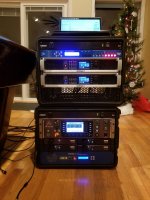The bit I quote kinda doesn't, but I think you know that because....linear phase. This is where all frequencies arrive together in phase.
If all this has made sense,
let me pose a question that finally led me to see 'what I believe is the light behind all this....'
What does it mean for all frequencies to arrive in time and in phase together?
What part of the waveform are we talking about arriving together?
I'm in full agreement to Mark's post #57.
One minor detail, though:
From experience we know that destructive summing (inter-phase > 120°) isn't what we strive for for a variety of reasons.
One major point worth noting is that this is all independant of whatever target transfer functions we might have choosen for the drivers. So we start with a prototype XO with the analytical target functions (that may even comprise an intentional time-of-flight inter-driver delay and/or allpass sections in order to work, for example when we want to implemement a usable linear phase crossover in the analog domain) and then fit the magnitude and especially the phase curve of the driver to the prototype function by setting up proper electrical correction filters. If these filters also contain unavoidable delays (positive or negative times) then the acoustic centers don't match to the target assumptions (which would be typically, but not restricted to, a zero offset/delay). There are a few ways the offset can be adjusted, of course most easily by moving the drivers.
And the process of matching the actual driver's responses (mag and phase) to the prototype model functions is what I would consider time- and phase-alignment.
One minor detail, though:
Phase alignment in my view is what has to be done to get an intentional, well-defined phase relationship between drivers which isn't restricted to zero. For a true D'Appolito W-T-W arrangement for example, we would want a constant 90° phase offset between drivers througout the XO region which automatically leads to Butterworth magnitude responses. There a many valid definitions of what the inter-driver phase must be, this all depends on the crossover function/topology choosen, and there are restrictions.That achieved, next comes phase alignment. It is having the phase traces of overlapping drivers lay on top of each other through the region of acoustic summation. The traces don't have to be flat, they just have to have the same slope/shape and lay on top of each other. This is accomplished by considerable experience with crossover design, and measuring expertise.
From experience we know that destructive summing (inter-phase > 120°) isn't what we strive for for a variety of reasons.
One major point worth noting is that this is all independant of whatever target transfer functions we might have choosen for the drivers. So we start with a prototype XO with the analytical target functions (that may even comprise an intentional time-of-flight inter-driver delay and/or allpass sections in order to work, for example when we want to implemement a usable linear phase crossover in the analog domain) and then fit the magnitude and especially the phase curve of the driver to the prototype function by setting up proper electrical correction filters. If these filters also contain unavoidable delays (positive or negative times) then the acoustic centers don't match to the target assumptions (which would be typically, but not restricted to, a zero offset/delay). There are a few ways the offset can be adjusted, of course most easily by moving the drivers.
And the process of matching the actual driver's responses (mag and phase) to the prototype model functions is what I would consider time- and phase-alignment.
Last edited:
Mildly on topic...
Ah, you crazy Brits. Your "hoover" is the USA's "vacuum cleaner." Next thign you will be telling me is that a "tannoy" is a noun/verb for a public address speaker
Any advocates for active DSP/crossover here? Can be done quite cheaply (especially if can stomach low-end electronics that rhyme with Derringer or equivalent ) ... if one is a DIYer shouldn't one tailor one's system to a specific room? Yes, it requires more wires, components, and of course measurements and figuring curves and crossover points, but it should result in a much better listening experience.
or equivalent ) ... if one is a DIYer shouldn't one tailor one's system to a specific room? Yes, it requires more wires, components, and of course measurements and figuring curves and crossover points, but it should result in a much better listening experience.
Ah, you crazy Brits. Your "hoover" is the USA's "vacuum cleaner." Next thign you will be telling me is that a "tannoy" is a noun/verb for a public address speaker
Any advocates for active DSP/crossover here? Can be done quite cheaply (especially if can stomach low-end electronics that rhyme with Derringer
Any advocates for active DSP/crossover here? Can be done quite cheaply (especially if can stomach low-end electronics that rhyme with Derringeror equivalent ) ... if one is a DIYer shouldn't one tailor one's system to a specific room? Yes, it requires more wires, components, and of course measurements and figuring curves and crossover points, but it should result in a much better listening experience.
DSP? Active crossover?
Heresy! LOL
Attachments
DSP? Active crossover?
Heresy! LOL
LOL!
Yes, please.
DSP is nice unless you want to stay strictly analog.
Before I proceed further, here's JBL 4206 Time aligned monitor.

It's clearly stated, "are aligned to deliver both high and low frequency information to the listening position at precisely the same instant".
Now that we have a clear definition of time-alignment, these are my measurements of my latest project, a time-aligned 2-way using a Dayton RS180s and a Peerless H26TG46 tweeter. No step, no flush mounting. Fully passive crossover. No delay network and no external electronic delays.




So far, all it shows is good phase alignment at the crossover frequency.
I hope we can all agree on this.

It's clearly stated, "are aligned to deliver both high and low frequency information to the listening position at precisely the same instant".
Now that we have a clear definition of time-alignment, these are my measurements of my latest project, a time-aligned 2-way using a Dayton RS180s and a Peerless H26TG46 tweeter. No step, no flush mounting. Fully passive crossover. No delay network and no external electronic delays.




So far, all it shows is good phase alignment at the crossover frequency.
I hope we can all agree on this.
Now comes the fun part.
This is the delay between the woofer and the tweeter. Obviously, this is done without the crossover. Power amp straight to the tweeter. Next sweep. power amp straight to the woofer.
The delay measures 0.06ms. That's 20mm. So conventional wisdom is to use a 20mm step to bring the acoustic centers of the woofer and tweeter together (aligned). Plonk in a crossover after that and you have a time aligned speaker.

What you want is this.

This is the time arrival of the tweeter with the high pass filter (red) and the arrival of the woofer (green) with the low pass filter.
If this is not time-aligned, I apologize for wasting everyone' time.
This is the delay between the woofer and the tweeter. Obviously, this is done without the crossover. Power amp straight to the tweeter. Next sweep. power amp straight to the woofer.
The delay measures 0.06ms. That's 20mm. So conventional wisdom is to use a 20mm step to bring the acoustic centers of the woofer and tweeter together (aligned). Plonk in a crossover after that and you have a time aligned speaker.

What you want is this.

This is the time arrival of the tweeter with the high pass filter (red) and the arrival of the woofer (green) with the low pass filter.
If this is not time-aligned, I apologize for wasting everyone' time.
Article on using DSP to time align drivers, including before and after time alignment of a two-way:
Audiolense Digital Loudspeaker and Room Correction Software Walkthrough - CA Academy - Computer Audiophile
See this Stereophile on why one uses a step response versus impulse response to view driver time alignment: Measuring Loudspeakers, Part Two | Stereophile.com
Audiolense Digital Loudspeaker and Room Correction Software Walkthrough - CA Academy - Computer Audiophile
See this Stereophile on why one uses a step response versus impulse response to view driver time alignment: Measuring Loudspeakers, Part Two | Stereophile.com
Having the basic note of a bassoon (from the mid-range driver) and the upper partials (from the tweeter) reach you about the same time seems logically a good idea*.
1. But thinking in terms of single rays of sound emanating from drivers in coherent phase-orderly ways is just simple Euclidean arm-chair day-dreaming, not empirically meaningful, and not relevant to sound in non-anechoic rooms where stuff bounces around.
Phase has a solid reality when you only do sine wave testing, for sure. But have the arm-chair theorists ever done an FR with both L and R speakers playing the same signal. Even notice that there are regions where the combined signal is less than L or R? Yup, that's phase in the real world: move one or both of your ears a little distance and the whole phase coherency goes weird.... but the sound does not change in the least (pure sine wave testing with one ear possibly excepted).
2. Likewise inexcusably simple is to think of the signal issuing from the amp as "Ground Zero" and Therefore QED what reaches the listener has to be coherent with that electric signal. "Ground Zero" is the sound coming from the bassoon a thousand phase rotations and a million transistor junctions away through the console of a "creative" recording engineer, producer, and artist's meddling.
B.
*Just because it seems logical does not mean that hearing perception cares much, at least within a certain time tolerance; but many of us find that time-alignment with a DSP got to help the sound, esp getting the bass driver(s) to click with the rest of the boxes. Granted, at some very low freq time and phase begin to be similar.
1. But thinking in terms of single rays of sound emanating from drivers in coherent phase-orderly ways is just simple Euclidean arm-chair day-dreaming, not empirically meaningful, and not relevant to sound in non-anechoic rooms where stuff bounces around.
Phase has a solid reality when you only do sine wave testing, for sure. But have the arm-chair theorists ever done an FR with both L and R speakers playing the same signal. Even notice that there are regions where the combined signal is less than L or R? Yup, that's phase in the real world: move one or both of your ears a little distance and the whole phase coherency goes weird.... but the sound does not change in the least (pure sine wave testing with one ear possibly excepted).
2. Likewise inexcusably simple is to think of the signal issuing from the amp as "Ground Zero" and Therefore QED what reaches the listener has to be coherent with that electric signal. "Ground Zero" is the sound coming from the bassoon a thousand phase rotations and a million transistor junctions away through the console of a "creative" recording engineer, producer, and artist's meddling.
B.
*Just because it seems logical does not mean that hearing perception cares much, at least within a certain time tolerance; but many of us find that time-alignment with a DSP got to help the sound, esp getting the bass driver(s) to click with the rest of the boxes. Granted, at some very low freq time and phase begin to be similar.
Last edited:
Article on using DSP to time align drivers, including before and after time alignment of a two-way:
Audiolense Digital Loudspeaker and Room Correction Software Walkthrough - CA Academy - Computer Audiophile
See this Stereophile on why one uses a step response versus impulse response to view driver time alignment: Measuring Loudspeakers, Part Two | Stereophile.com
I'm aware of all these. But they are all inference. Today, there's an easier and better way. It's a fabulous software called REW. You can do time-alignment with it. And best of all, it's FREE.
From my experience there is a huge difference between a 2-way sounding as separate speakers or when they sound as one single speaker.
You are so right.
See this Stereophile on why one uses a step response versus impulse response to view driver time alignment: Measuring Loudspeakers, Part Two | Stereophile.com
This is my step response.

Now comes the fun part.
What you want is this.

This is the time arrival of the tweeter with the high pass filter (red) and the arrival of the woofer (green) with the low pass filter.
If this is not time-aligned, I apologize for wasting everyone' time.
Hi Michael , in my understanding, that's not phase alignment.... like what you show with troughs (or peaks) being aligned.
Very common misunderstanding.
Phase alignment is where the initial leading edges, rising from t=0, are in sync.
Hi Mark
I'm sorry, maybe I should have been clearer.
The plot is not phase measurement. It is delay measurement. They are made with a software called REW. It has a Time alignment feature.
You first sweep a speaker, in my case, it's the tweeter with the HP filter to act as a reference. Then sweep the second driver, which is the woofer with the LP filter.
If the two sounds reach the mic at the same instant, they are aligned. My plot shows the woofer and tweeter reach the mic at exactly the same time.
I'm sorry, maybe I should have been clearer.
The plot is not phase measurement. It is delay measurement. They are made with a software called REW. It has a Time alignment feature.
You first sweep a speaker, in my case, it's the tweeter with the HP filter to act as a reference. Then sweep the second driver, which is the woofer with the LP filter.
If the two sounds reach the mic at the same instant, they are aligned. My plot shows the woofer and tweeter reach the mic at exactly the same time.
This is JBL 4206 Energy Time Curve (ETC).

Here's my Energy Time Curve made with my time aligned speaker. I adjusted the horizontal time pan to 18,000 microseconds for easy reference to JBL. My horizontal scale is 1 ms per division. You can see the bulk of the energy is from 0 to 0.5 ms.


Here's my Energy Time Curve made with my time aligned speaker. I adjusted the horizontal time pan to 18,000 microseconds for easy reference to JBL. My horizontal scale is 1 ms per division. You can see the bulk of the energy is from 0 to 0.5 ms.

Here is an example of a rare transient-perfect (hence, time aligned) speaker measured by Stereophile. According to John Atkinson, he can count the speakers that he has measured as transient perfect and time aligned on one hand. It is the Dunlavey SC-IV and this is what transient perfect looks like - the tweeter rising edge coincides with the mid rising edge and the woofer rising edge and they form a sort of right triangle. All the leading edges go in the same direction:
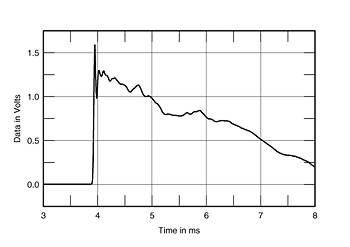
The impulse response also shows a single peak that shows all impulses aligned in time and in direction:
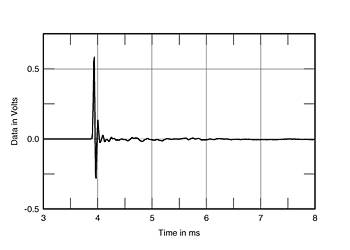
A LR 2nd or 4th order cannot do this. Examples of highly acclaimed speakers using LR2 and LR4 crossovers generally look like a mess. An example of the step response of one is shown here:
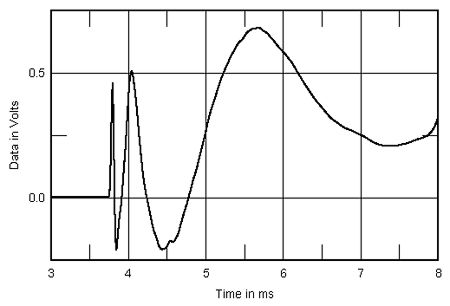
Note how none of the peaks align in time and the sense of up and down are all mixed up. Use of even order LR2 usually requires one of the drivers to be in anti-phase so that the tweeter is usually the one going down while the woofer goes up. This is the highly regarded B&W 802D.
Here is a Sonus Faber Venere 2.5, a little better but not perfect:
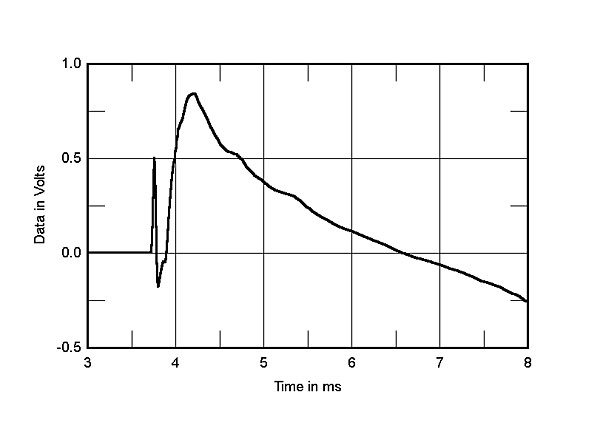
But move into a higher bracket 4 way model like the Sonus Faber Stradivare and you get a mess again:
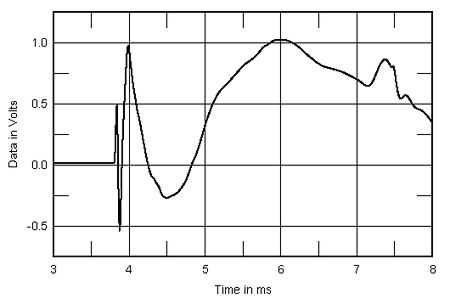
This is the beauty of full range speakers - they are naturally transient perfect and time aligned. That is a big reason they sound so natural and lifelike when driven with a proper amplifier. Best is an amplifier with zero global feedback so that the phase information is not perturbed. FAST or WAW (as SJ like to call them) can be be made transient perfect with the right kind of XO. My Scan Speak 10F/RS225-8 FAST are transient perfect through use of a 1st order XO and physically aligning the fullrange relative to the woofer for time alignment. Here is the step response from my FAST:
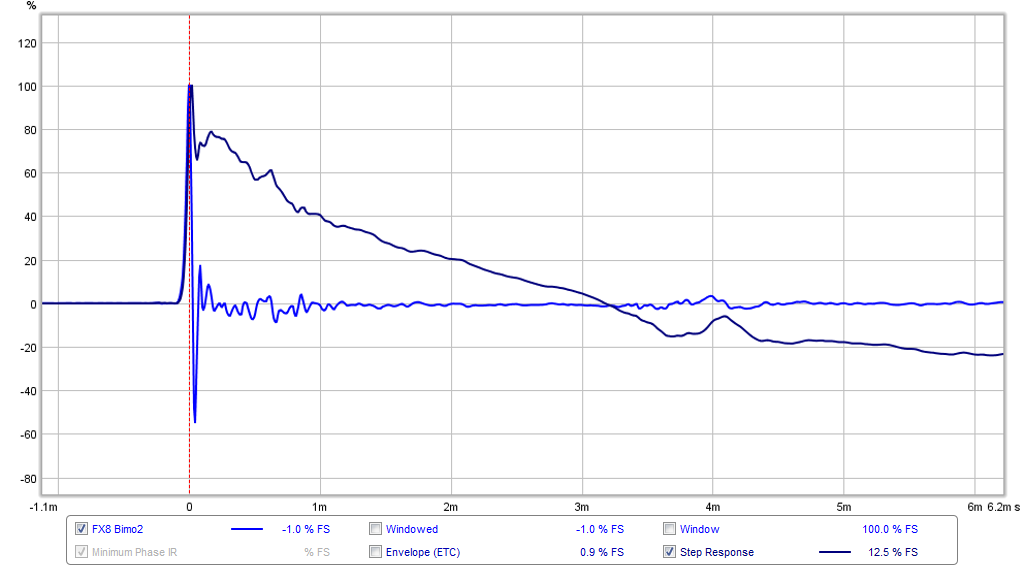

The impulse response also shows a single peak that shows all impulses aligned in time and in direction:

A LR 2nd or 4th order cannot do this. Examples of highly acclaimed speakers using LR2 and LR4 crossovers generally look like a mess. An example of the step response of one is shown here:

Note how none of the peaks align in time and the sense of up and down are all mixed up. Use of even order LR2 usually requires one of the drivers to be in anti-phase so that the tweeter is usually the one going down while the woofer goes up. This is the highly regarded B&W 802D.
Here is a Sonus Faber Venere 2.5, a little better but not perfect:

But move into a higher bracket 4 way model like the Sonus Faber Stradivare and you get a mess again:

This is the beauty of full range speakers - they are naturally transient perfect and time aligned. That is a big reason they sound so natural and lifelike when driven with a proper amplifier. Best is an amplifier with zero global feedback so that the phase information is not perturbed. FAST or WAW (as SJ like to call them) can be be made transient perfect with the right kind of XO. My Scan Speak 10F/RS225-8 FAST are transient perfect through use of a 1st order XO and physically aligning the fullrange relative to the woofer for time alignment. Here is the step response from my FAST:

This is the beauty of full range speakers - they are naturally transient perfect and time aligned. That is a big reason they sound so natural and lifelike when driven with a proper amplifier. Best is an amplifier with zero global feedback so that the phase information is not perturbed.
Yes!
I had the pleasure some weeks ago to listen to a good fullrange the first time (pretty late, I wish I had done it sooner).
I remember, after a while listening to them and then to multi-way speakers those (multi-way) just sounded kind of wrong or torn/disrupted.
A few more days later I thought I can never go "back".
And so the speakers I intended to go with my soundsystem ended up being my main speakers.
- Status
- This old topic is closed. If you want to reopen this topic, contact a moderator using the "Report Post" button.
- Home
- Loudspeakers
- Multi-Way
- What is Time-Alignment
